Cross-selling is a useful tactic for ecommerce, and retail in general, to encourage shoppers to spend more and increase your average order values.
Online, it can be done in a number of ways throughout the time customers are on site. In this article, we’ll look at some best practices for cross-selling, and some mistakes to avoid.
What’s the difference between cross-selling and up-selling?
Cross-selling tactics aim to encourage shoppers to add additional products and services to their baskets. For example, many shops will display smaller products (chocolate, batteries etc) around the till to encourage impulse purchases to add to the items you’ve already selected.
The same principle works online, with the added bonus that cross-selling recommendations can be relevant to the exact products the shopper has added to their basket.
So here on Tredz, the shopper who has added a bike to their shopping basket is shown complementary products like helmets, clothing and pumps. This can prompt the user to add other items they need, and persuade them to spend a little more.

Up-selling also aims to persuade shoppers to spend more, but to buy a more expensive version of the item they’re considering, rather than adding extras to their existing order. about persuading customers to buy more expensive items.
Apple, for example, shows two versions of its MacBook Pro together, making sure that shoppers considering the cheaper version on the left can see the potential benefits on spending a little more.
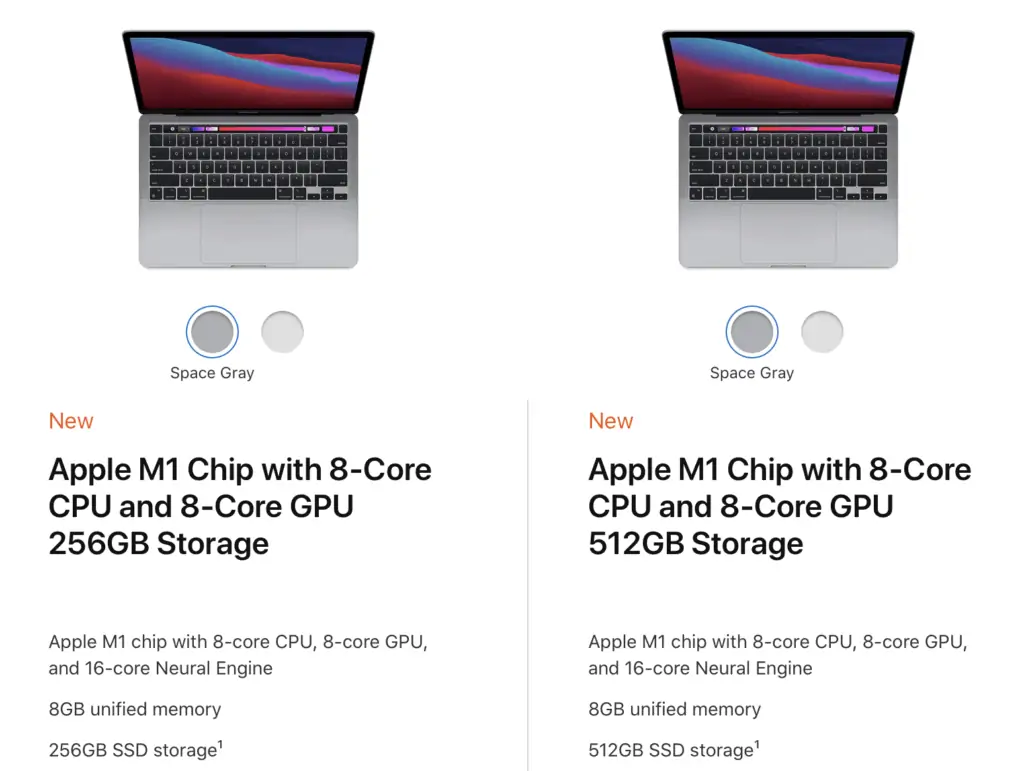
Benefits of cross-selling
There are several key benefits to using cross-selling online:
- Increased average order values
Ecommerce is not just about selling to lots of customers, it’s about maximising profits from each transaction. Cross-selling is a great way to persuade customers to spend more on each order. - Improved customer experience
Relevant cross-sell recommendations can help customers, by highlighting key accessories or other products that complement those on their existing order. If a customer is buying an item that requires batteries, or some other accessory, you’re helping them out and saving them time. - Increased customer lifetime value
It can be easier to sell to existing customers who have been happy shopping with you before. The data you have on their previous browsing and purchasing behaviour means you can provide useful cross-selling suggestions to customers who are more likely to buy from you.
Cross-selling in ecommerce: best practice tips
Cross-selling can be used in various ways online – as customers are browsing, when they’ve added products to carts, when they’re in checkout, and even post-purchase.
Relevance is key
The advantage of cross-selling online is the potential to use the data you have about the customer and the product to ensure that cross-selling recommendations are relevant.
If they’re relevant, they are more likely to complement the product the shopper is buying and more likely to succeed.
These recommendations may be directly related to the product in the shopper’s basket, but they don’t have to be. They could be unrelated products that the customer has bought before, or expressed an interest in. The key is that they’re relevant to the shopper.
Ocado shows me products I’ve previously purchased but haven’t added to the current order as I checkout. This can be helpful as I may have forgotten something, or may just tempt me into adding some chocolate biscuits into my basket and persuade me to spend a little more.
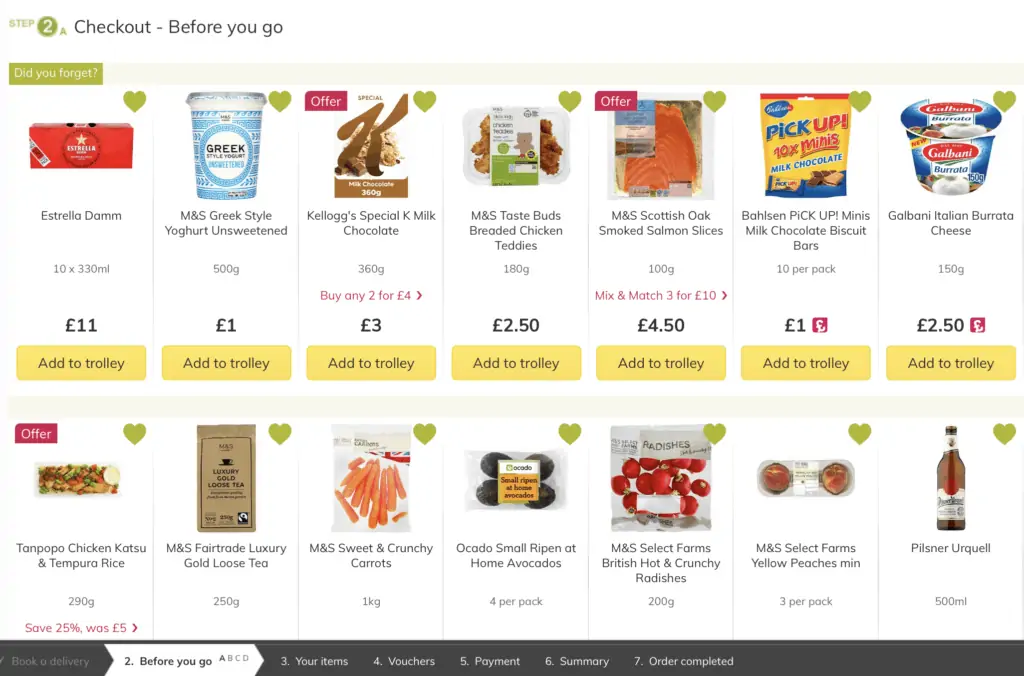
Make it easy to add cross-sell items
Often, sites are adding cross-sell recommendations at a point where customers have already decide on a purchase.
This is a great place to show cross-selling recommendations, but there is also a risk that, by taking customers out of checkout, you’re interrupting a purchase.
It helps if products can be added there and then, keeping customers within the checkout process.
In this example from Laptops Direct, this pop-up appears when a customer adds an item to their basket. It doesn’t interrupt the process though, as items can be added there without the need to visit product pages.
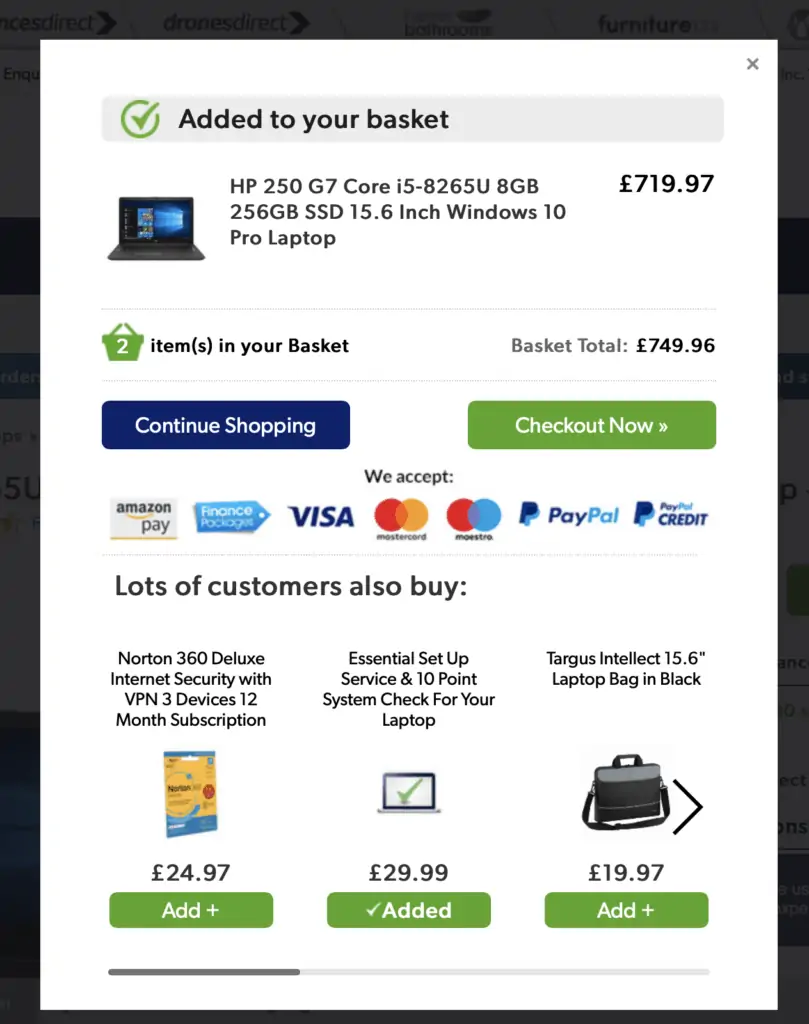
Likewise, Uniqlo allows shoppers to hover over recommendations and choose the size and colour before adding to their existing order, all without taking them away from checkout.
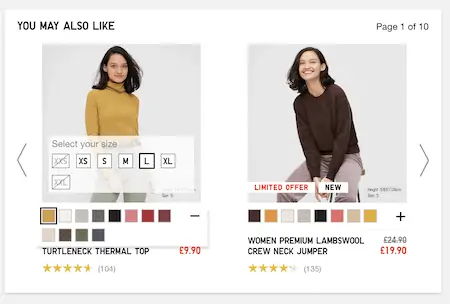
Cross-selling via bundles
Bundling products together can be a useful cross-selling tactic. They provide the customer with relevant recommendations but with the extra carrot of a discount, and are also easy to add to their basket.
For example, Curry’s shows these bundles on the product page for its Instax camera. Shoppers seem to get a better deal, and Curry’s ensures that they buy their films from them.
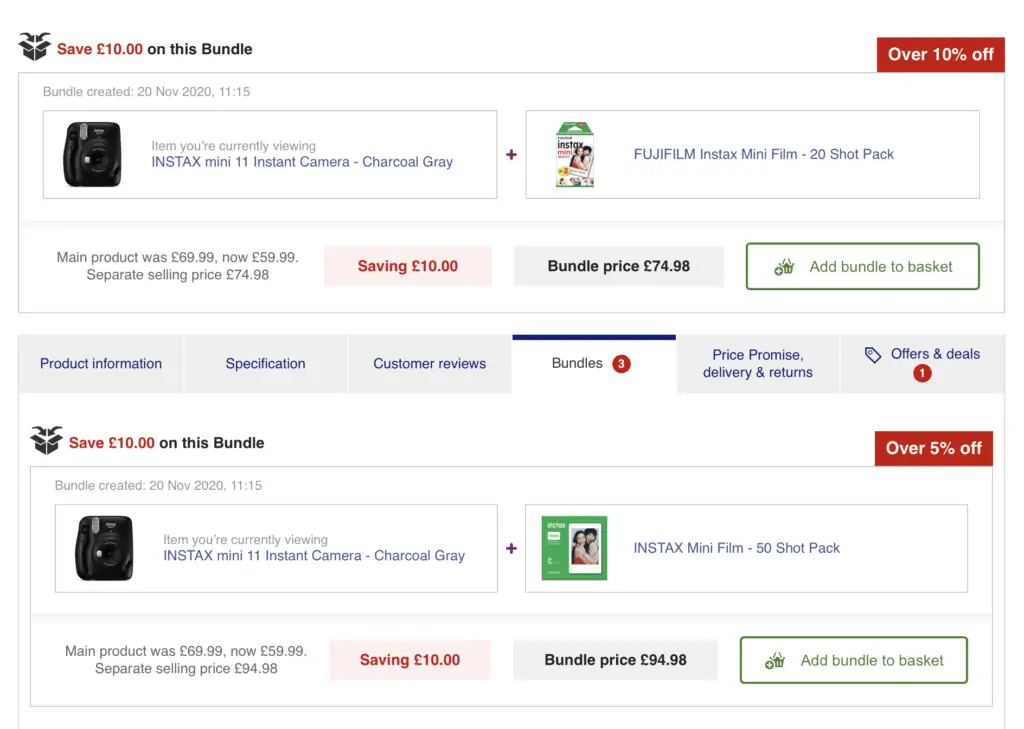
Use free shipping thresholds to encourage customers to spend more
If customers are close to qualifying for free shipping or some other extra, then this is a great point to recommend other products to get them over the threshold.
In this example, the amount required to qualify for free delivery is highlighted on the shopping basket page, and cross-selling recommendations are shown below the basket contents.
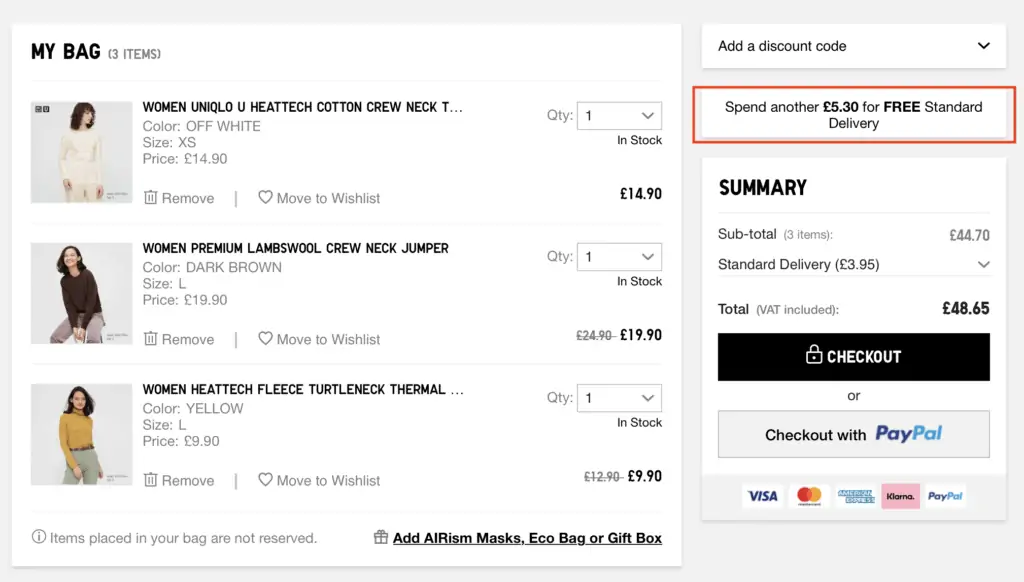
Don’t overdo cross-selling
Cross-selling can be useful to the customer, and of course helps the retailer to drive up average order values, but it can also be an irritation when overused.
The exact point where it’s overdone is for each retailer to determine – analytics data should help you determine whether cross-selling is deterring customers, or where it is less effective.
In this example, it may be getting to the point where it could deter shoppers, especially as it serves to lengthen the checkout process.
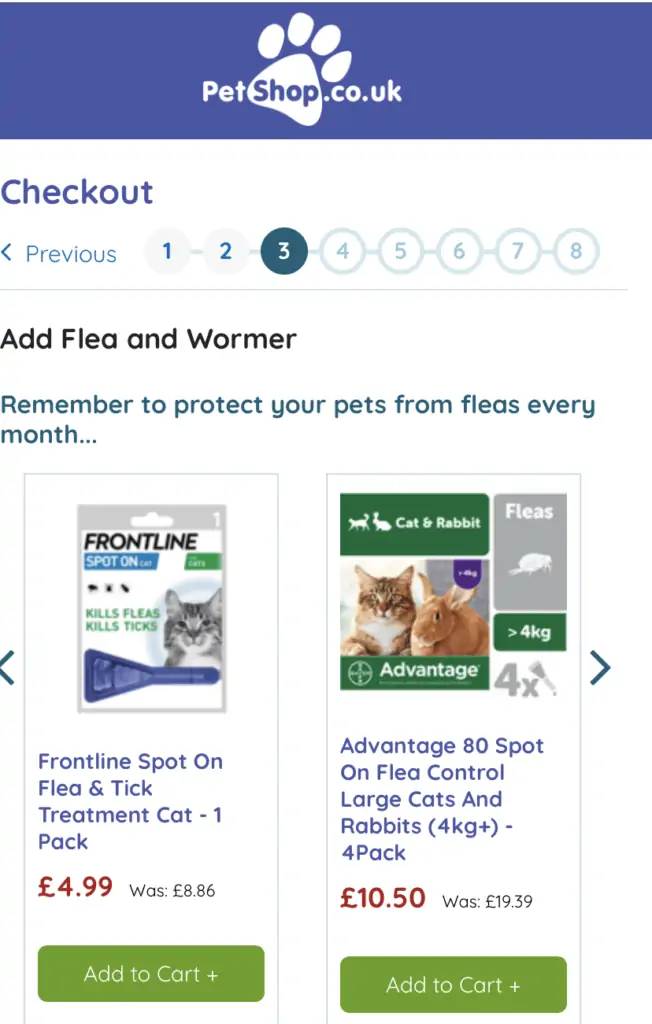
Steps 2,3,4 and 5 of this checkout process are dedicated to cross-selling, which risks annoying customers, and does make checkout more of a hassle to complete.
Perhaps the retailer’s data shows this works and increases profits, but it certainly important to consider whether you’re deterring customers when cross-selling.
Add cross-selling to key points in the customer journey
Cross-selling generally works when customers are clearly considering a certain product. This may be on the product detail page, the shopping basket page, or during checkout, or in-between stages, such as this overlay which appears after a shopper has added items to their cart.
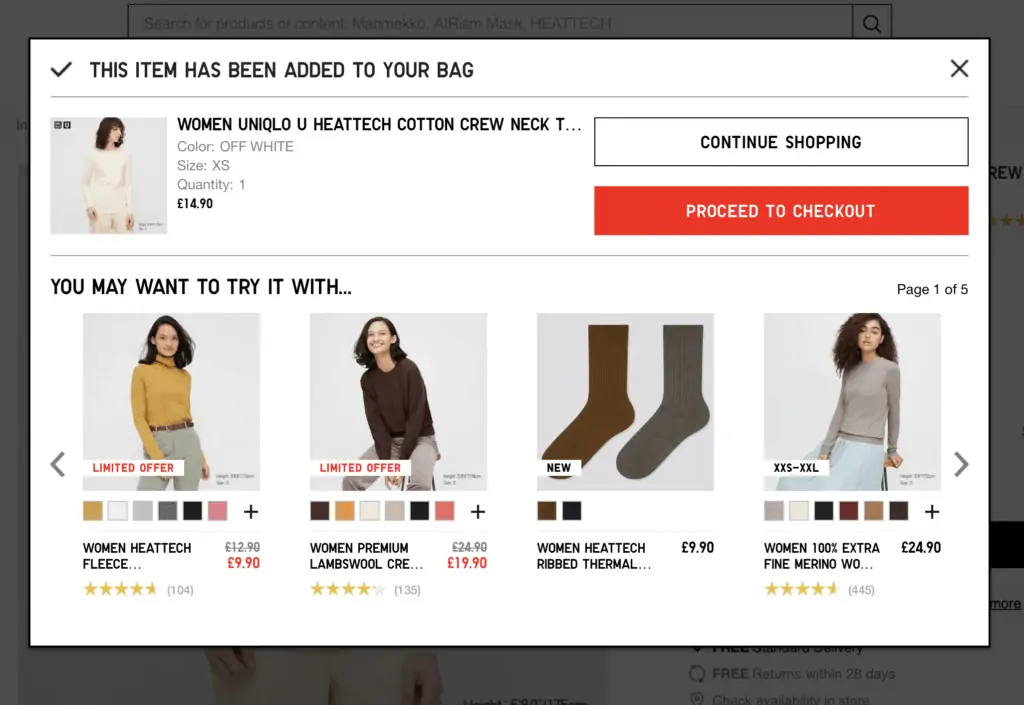
Add high-margin products as cross-selling recommendations
Some products, laptops for example, aren’t in themselves especially profitable, but retailers can make up for this by adding cross-selling options which have a higher profit margin.
This can also help to justify discounts for in-demand products during sales events like Black Friday.
Add cross-selling options to post-purchase emails
Cross-selling can still be effective once a customer has made a purchase. For example, products related to a customer’s purchase can be recommended in subsequent emails, as in this example from Crate&Barrel.

